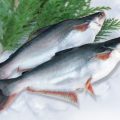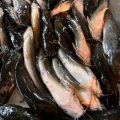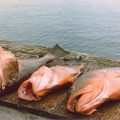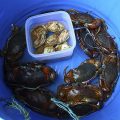Rearing Yellow-Tail Catfish in a Floating Net Cage
Advantages of the Technology
This method of fish production gives farmers a new source of income, and supplies protein to the farm family. Only a small cash investment is needed.
Effectiveness of the Technology
Yellow-tail catfish (`patin’ in the Indonesian language) is a freshwater fish. It is reared as an ornamental fish in many countries, as well as for food. It is an excellent food fish, with very white, fine-grained, sweet flesh.
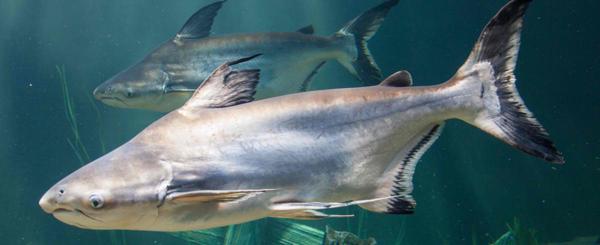
It can grow more than a meter long, but is usually harvested when it is around 30 cm long and weighs about half a kilogram. It has good potential for rearing, because it grows rapidly. In addition, it can survive in water with a low oxygen content, high turbidity and a high population density.
Market demand for this fish in Indonesia is high. Small-sized fish (5 cm long) for aquaria are sold at US$0.04 cents each, while food fish weighing around half a kilogram each sell for US$0.57 to US$1.14 each.
About the Fish
Yellow-tail catfish is a favorite food fish in many Southeast Asian countries. This species is very similar to the shark catfish, Pangasius sutchi, another favorite food fish, except that the shark catfish has a white abdomen and the yellow-tail catfish has a black one. Like all catfish, both species have no scales, and have hard, sharp spines on the chest and back fin.
How to Rear the Fish
Prepare the cage, which should measure about 7 x 7 x 7 meters. The netting can be a plastic fine-meshed net.
Before putting the fish into the cage, put them into an acclimatization cage for 7 – 10 days. This will help the fish to adapt to their new environment. Make sure that all the fish are healthy, and remove any sick ones. Feed the fish with 2 mm sized fish pellets, two or three times a day.
Healthy fish which are 5 – 8 cm in length (80 – 100 grams in weight) are transferred into the floating net cage. The population at this point is about 3,500 fish in the whole cage. Continue feeding the fish on pellets once a day, or 2 – 3 times a day during the rearing period. The quantity at each feeding should be 2 – 5% of the total biomass of the fish.
Assessment
After five months of rearing, the fish will weigh from 175 to 500 grams each. They can now be harvested. Of course, prices vary from one country to another, and even in the same country at different times of year. However, a cost/benefit analysis carried out in Indonesia showed that a total investment of around $500 (for the net cages and fingerlings) gave a net profit of nearly US$300 in the first year, an annual return on the investment of 56%.
Cooperating agency for this topic: Assessment Institute of Agricultural Technology (AIAT)
Source: agnet.org
